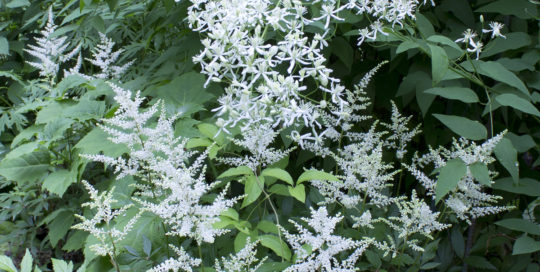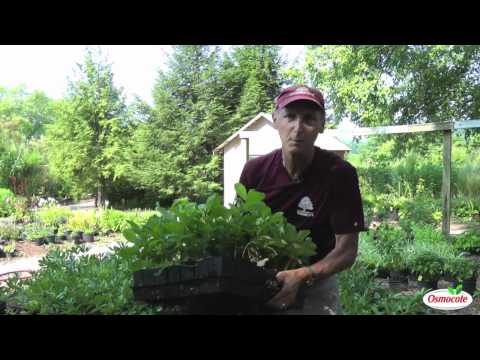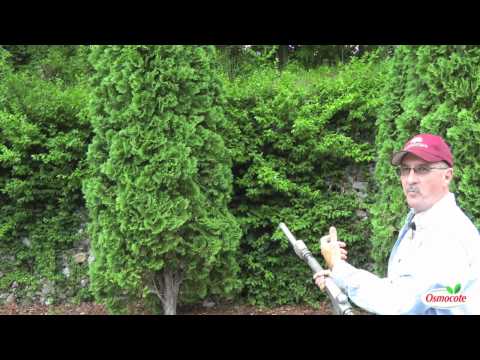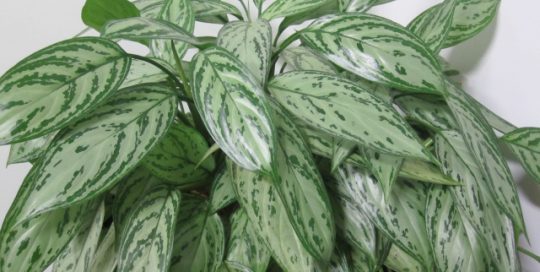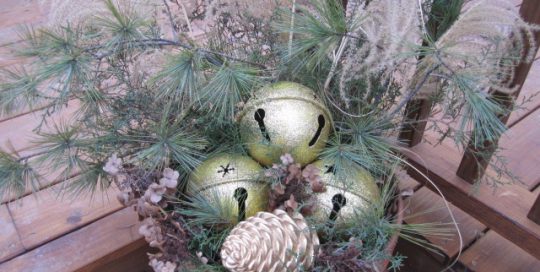It’s only a matter of time before our gardens are covered by winter precipitation. And that’s not always the pretty white, flaky kind. First comes the rain—more than we think possible—to beat down any plant still standing.
If you have lots of trees that shed their leaves, one of the best reasons for raking most of them off the flower beds is so that you can see the green. Yes, there can be green (or shades thereof) after November. And there is something uplifting about seeing it from your windows.
You can give yourself something to look at from November through March by including miniature and dwarf conifers. You can go well beyond that by combining them with evergreen groundcovers.
A Violet Grown for its Leaves
Viola ‘Silver Gem’ was discovered in Bib County, Alabama in 2003 and introduced in 2010 by Mt. Cuba Center, a botanical garden and native plant conservation champion in Hockessin, Delaware. The plant’s name couldn’t be more apt, with its silvery foliage hugging the ground in some of the most inhospitable locations while sending up tiny jewel-like flowers in the spring and intermittently throughout the summer.
‘Silver Gem’ grows no more than five inches tall and spreads slowly in the deepest of shade beneath moisture-hogging trees. It spreads and blooms with a bit more conviction if given a brighter position and supplemental moisture. The little American native violet is hardy to Zone 6 (to Zone 5 with protection). It is widely available through many nurseries.
Epimedium is a Very Tough Customer
Some of the toughest groundcovers are Epimedium. Of several common names—barrenwort, bishop’s hat, fairy wings, and horny goat weed—only the reference to fairy wings evokes the image of the leaves born on nearly all of the species. The flowers of Epimedium float above the plant on wiry stems. The blossoms suggest fanciful dancing spiders in colors including white and yellow and a range of pale pink to deep purple.
While some lose their leaves when the cold comes to stay, many are considered evergreen. One evergreen variety that hits the ground running, and covers any shady space fairly quickly, is Epimedium ‘Sulphureum’. This clump-forming perennial grows 8-12 inches tall and thrives in deep to partial shade. The leaves hold up quite well through most winters, emerging fresh and green through several snow events.
Varieties
Epimedium ‘Domino’ has a lot going for it. From its delicately narrow new foliage to its deep purple bicolored flowers, it deserves a place in any shade garden. Considered semi-evergreen, it’s surprisingly perky throughout early winter, although its leaves are solid green at the end of the season. This 12-18 inch-tall perennial is a restrained spreader, playing well with other plants like ferns and coral bells.
The rarest Epimedium in my garden is Epimedium ecalcarata, which I planted four years ago. It currently covers a space barely a foot in diameter. I’ve also had to “protect” it from being obliterated by its stronger neighbors. Its toothed, leathery leaves, which hover about 8 inches over the ground, are tough enough to rate being slotted in the evergreen category. Its new leaves are deep red and its flowers bright yellow.
The Chicago Botanic Garden published its Epimedium Evaluation in 2003, which tested for hardiness and ability to grow in more different soils.

